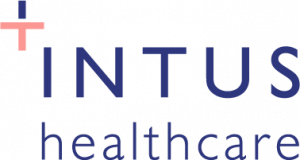Overnight Oximetry, Polysomnography & In-Home Sleep Tests
There are three different testing options commonly used to determine the presence of the sleep disorder Obstructive Sleep Apnoea (OSA). The first type is overnight Oximetry, the second is Polysomnography (PSG) conducted in specialised sleep clinics or hospitals and the third is a home sleep test (HST). All methods record your sleep and analyse certain body functions to help medical professionals understand if you have OSA and require treatment.
What is Overnight Oximetry?
Overnight Oximetry is a non-invasive diagnostic test used to measure a person’s oxygen levels during sleep. It involves wearing a small device called a pulse oximeter on your finger, which continuously monitors your blood oxygen levels and heart rate throughout the night. The primary purpose of overnight oximetry is to identify any significant drops in oxygen levels during sleep, known as a desaturation. This can indicate the presence of breathing-related sleep disorders and determine appropriate treatment to improve overall sleep quality and respiratory health.
What happens during Overnight Oximetry?
During Overnight Oximetry, you can expect to wear the device comfortably on your finger while you sleep. The pulse oximeter will record data and provide valuable information about any fluctuations or abnormalities that occur. It is a painless and hassle-free procedure that allows healthcare professionals to gather important insights into your respiratory function during sleep.
What is Polysomnography?
Polysomnography is an in-depth overnight diagnostic tool used in sleep medicine to diagnose sleep disorders. PSG is the most comprehensive test for diagnosing various sleep disorders, not only Sleep Apnoea. It is particularly beneficial when a complex sleep issue needs evaluation. Your healthcare provider may recommend a PSG sleep study if you have symptoms of Narcolepsy, Sleep Apnoea, Insomnia, Restless Leg Syndrome and more.
Polysomnography monitors brain waves, eye movements, muscle activity, heart rate, breathing patterns, and oxygen levels. Compared to Polysomnography, Oximetry only measures the saturation of oxygen in the blood and heart rate variability.
What happens at a sleep clinic?
A PSG takes place in a sleep clinic, hospital or specialised sleep centre, requiring at least one overnight stay. You will be advised to avoid caffeine or alcohol the evening before taking your test, as these can change your sleeping patterns. Typically you will be advised to arrive in the evening for your overnight stay.
Sensors will need to be attached by an adhesive to your skin to collect your sleep data (brain waves, eye movements, muscle activity, heart rate, respiratory effort, airflow, and more). A small clip is also placed on your finger or ear to monitor your blood oxygen levels. The test is painless and non-invasive, although you may experience some skin sensitivity due to the attached sensors. During PSG, you’ll be monitored by trained technicians who observe your sleep patterns throughout the night and make any necessary adjustments to the equipment. After your test, you will be given a follow-up appointment to discuss your results.
Alternatively, home testing provides accuracy comparable to Polysomnography in a simplified and portable format specifically for Sleep Apnoea.
What is a In-Home Sleep Study?
A home sleep test is used to accurately confirm the presence of Obstructive Sleep Apnoea from the comfort of your home. The easy-to-use system is non-invasive and requires one period of sleep data. Many people choose a home study because it is much quicker, more affordable, and requires no time off work.
Our WatchPAT home test uses a wrist monitor, finger probe and chest sensor to measure your breathing data to determine if you have Sleep Apnoea.
Watch our video below to understand how the device works:
Why choose a home test over a PSG?
Home sleep studies are a reliable and efficient way to confirm if you have OSA; many people choose a home test because of its convenience and affordability. The wait times for a NHS Sleep Apnoea test can be extensive, so many patients choose private testing. Home sleep studies are a simple alternative, with fewer sensors and no direct supervision and are designed for ease of use to set up at home.
You will find everything you need to take the test included in the sleep test kit, allowing you to complete it at your convenience. Our home test gives you results within seven to ten days of completing the test; our sleep technicians and customer services are at hand to support you throughout the entire process. We offer a range of treatment options from leading brands to suit everyone; with our help, you can start treatment within two weeks of taking your test.
Key features of the WatchPAT home sleep study
- Clinically validated against Polysomnography.
- Detects all types of Apnoea events.
- Comprehensive sleep report – AHI, sleep stages, body position statistics, heart rate, respiratory indices and more.
- The PAT signal is approved in the 2017 AASM HSAT Clinical Practice Guidelines for Adults with OSA.
- Simple to use.
- Results within seven to ten days of completing the test.
Not sure if you need a sleep test?


The In-Home Sleep Test
If you snore, choke in your sleep or have any other symptoms of Sleep Apnoea, consider purchasing a home sleep study. We will guide you through the process, providing expert advice and support. Taking the test is the first step in gaining back quality restorative sleep.
You can contact us if you have any questions or would like additional information.
Helpful Pages:
